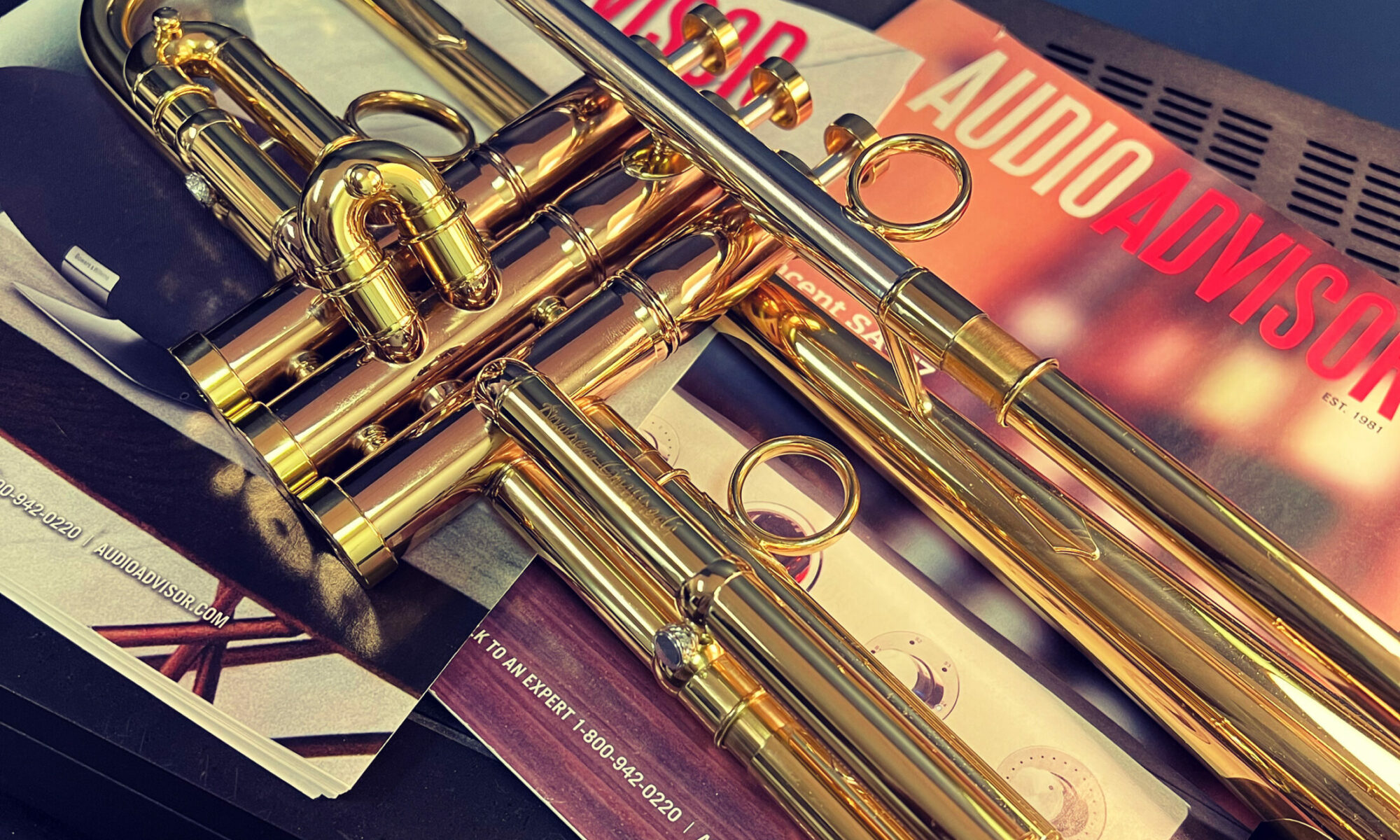I’ve recently re-vamped my home studio. This is “the laboratory” for lessons, practicing, study, or anything else music. I’ve recently added a web cam (this is the view)-more pictures to come!

Recommended Music!
I used to get a real kick out of reading Michael Fremer’s column in Stereophile magazine. He always had a little text box within his article titled “In Heavy Rotation”-a list of what recordings were seeing a good deal of playback time on his stereo. I’d like to do something similar here, so from time to time I’ll put up a short post of my favorites, current and longstanding. Enjoy!
Frank Sinatra – It Might As Well Be Spring
Tom Harrell – Roman Nights
Arturo Sandoval – A Time For Love
Bob Florence Limited Edition – Earth
Prokofiev: Romeo and Juliet – San Francisco Symphony/Tilson Thomas
Philip Smith – New York Legends
Find time to play with great players
Successful trumpet playing is easier if you have a great model to follow. Putting yourself in situations where you can play with high level musicians is one of the fastest ways to conceptualize and reinforce many aspects of making music.
I’ve found recently that sitting in an orchestra section has re-opened my eyes (ears) to what great articulation, a resonant sound, and leadership can do for trumpet playing. This weekly reminder has helped me with some aspects of my playing that I have let slide over the last few months to a year.
There are dozens of other concepts to learn while playing with a great player. Style, dynamics, control, balance, blend, intonation, and pace are just a few of them.
Take a lesson, play some duets, or “zero-in” on the principal of your section the next time you have rehearsal. I guarantee you’ll learn something to incorporate into your own playing.
The Sound of the Trumpet
A trumpet is identified by the sound it produces. There’s nothing else in the world, natural or man-made, that sounds like a trumpet. It’s also one of the easiest instruments for the everyday public to identify. Due to this and the fact that the trumpet plays a prominent and/or leading role in most ensembles it is imperative that quality of sound be of the highest priority for any trumpeter.
A select few of us are lucky enough to produce a beautiful, resonant sound without even trying. These people can put most of their focus toward something else while the rest of us spend a good deal of time working out different aspects of a good trumpet sound. For most situations, a good trumpet sound will possess qualities such as brilliance, clarity, depth, core, and projection. While each trumpet player works on various exercises (pedal tones, long times, breathing methods, soft and loud playing, etc.) to enhance the qualities they are looking to produce, having a vivid mental sound concept may be the most important. It is for me.
Take the time to immerse yourself in the sound of your favorite players. Listening to great trumpet sounds will cultivate a sound concept of your own, which will eventually find its way out of your bell. Listening will do as much for your sound as playing exercises, provided that your ear is critical enough when examining your own sound. The brain and ear working together really go a long way to promoting growth as a player. A “trumpet friendly” practice room and a recording device will help your ear do its job more effectively. I could discuss trumpet sound behind the bell versus out in front and how that can trick the ear, but that’s a topic for another day.
Spending time on a cold, rainy day…
I thought I would take the time to share some of my favorite recordings since it’s a dreary day here in Milwaukee. Listening to music is one of my favorite activities. I enjoy it on many levels, such as: learning performance techniques particular to a given instrument(How does Herseth phrase the posthorn solo?), studying compositional ideas and concepts demonstrated by the composer(Was that a Phrygian half cadence?), or just sitting back and basking in the overall mood and emotion.
Here’s a short list off the top of my head. Feel free to share some of your favorites.
Holst: The Planets – James Levine/Chicago Symphony Orchestra
Mahler: Symphony No. 2 – Leonard Bernstein/New York Philharmonic
Mussorgsky/Ravel: Pictures at an Exhibition – Fritz Reiner/Chicago Symphony Orchestra
Rimsky-Korsakov: Scheherezade – Fritz Reiner/Chicago Symphony Orchestra
Baroque Music for Trumpet – Wynton Marsalis
A Portrait – Chanticleer
Blue Wheat – Dale Warland Singers
The Blues and the Abstract Truth – Oliver Nelson
We Get Requests – Oscar Peterson Trio
It Might as Well Be Spring – Count Basie and Frank Sinatra
Nancy Wilson/Cannonball Adderley
John Coltrane and Johnny Hartman
Temptation – Holly Cole
Modern Cool – Patricia Barber
